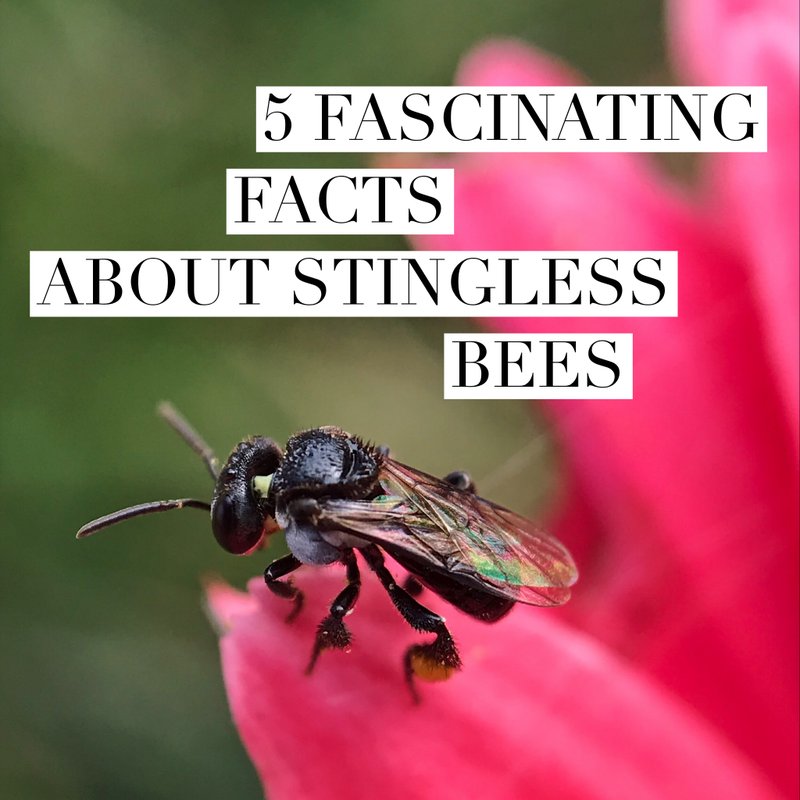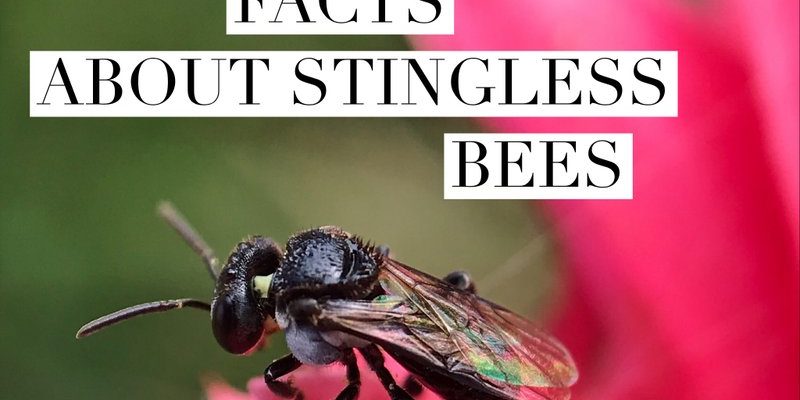
Stingless bees belong to the Meliponini tribe and are found mainly in tropical and subtropical regions. They’re not just interesting because they don’t sting; they’re also incredible pollinators and social insects, living in large colonies with complex structures. Let’s dive into the intriguing world of stingless bees, exploring their behavior, habitats, and the vital roles they play in nature.
What Are Stingless Bees?
Stingless bees are small, social insects that live in colonies, similar to honeybees. Unlike their more famous relatives, they lack a stinger, which makes them much less threatening to humans. These little bees usually measure between 3 to 15 mm in length and can come in various colors, from black to bright yellow. You might be wondering why these bees don’t sting. Well, their defense mechanism relies more on their sheer numbers and sometimes on their ability to bite.
These bees build their nests in hollow trees, underground cavities, and sometimes even in man-made structures. Their nests are usually made from a mix of wax and plant resins, resulting in a unique, comb-like structure. One interesting aspect of stingless bees is how they communicate and coordinate their activities. They use a method known as “tandem running,” where one bee leads another to a location, much like a tour guide showing someone around.
The Importance of Stingless Bees in Pollination
You might be surprised to learn that stingless bees are essential for pollinating many plants, especially in tropical and subtropical environments. Their small size allows them to access flowers that larger bees can’t, making them quite effective pollinators. It’s like having a tiny expert that can get into places the bigger guys can’t reach.
Stingless bees are also known for their ability to pollinate certain crops that require specific conditions. For example, they’re vital for the production of fruits like mangoes and guavas. Studies show that plants pollinated by stingless bees can produce more fruit and seeds than those that aren’t. This means that these bees play a significant role in our food systems. Without them, we could see a drop in certain fruit yields—a pretty big deal for farmers and fruit lovers alike!
Unique Behaviors of Stingless Bees
Stingless bees exhibit some truly remarkable behaviors that set them apart from other bees. One of the most fascinating is their use of chemical communication. They produce unique scents to mark their territory and signal food sources. It’s like their own little language that helps them work together efficiently.
Another interesting behavior is how they store their food. Instead of making just honey, stingless bees create a product called “honeydew,” which is derived from the sugary secretions of insects like aphids. They mix this with nectar, resulting in a different flavor and texture than traditional honey. This honeydew can also be more nutritious for the bees, allowing them to thrive and sustain their colonies.
Stingless Bee Honey: A Delicacy
Speaking of honey, let’s talk about stingless bee honey. If you ever get the chance to taste it, you’re in for a treat! This honey is known for its unique flavor, which can range from sweet to slightly tangy, depending on the flowers the bees visit. Because it’s often produced in smaller quantities than honey from honeybees, it’s considered a delicacy in many cultures.
Many people believe that stingless bee honey has medicinal properties and can help with ailments like sore throats and digestive issues. It’s used in various traditional medicines and is gaining popularity in health foods. Honestly, finding a jar of this honey can feel like discovering a hidden gem at a local market—it’s a sweet reward for those who seek it out!
Where Do Stingless Bees Live?
Stingless bees are primarily found in tropical and subtropical regions around the world. They thrive in places like Southeast Asia, Africa, and South America, where the climate is warm and humid. You might wonder why they stick to these areas. Well, their habitats provide the lush vegetation and floral diversity that they depend on for food and nesting materials.
Interestingly, stingless bees have adapted to various environments, including urban areas. They can often be found thriving in gardens and parks, where flowers are abundant. This adaptability makes them crucial for urban pollination, helping plants to flourish even in our concrete jungles. By bringing in a little nature, these bees enhance biodiversity, making cities not only livelier but also more sustainable.
Conservation and Threats to Stingless Bees
Like many other bee species, stingless bees face numerous threats today. Habitat loss due to urbanization, deforestation, and agricultural expansion can severely impact their populations. The use of pesticides also poses a significant risk, as these chemicals can harm or kill these vital insects.
Conservation efforts are crucial to protect stingless bees and their habitats. Creating safe spaces for these bees, like maintaining wildflower gardens, can help support their populations. Educating ourselves and others about the importance of stingless bees is another step we can take. Every little bit counts when it comes to preserving these incredible pollinators and supporting biodiversity.
Final Thoughts on Stingless Bees
Stingless bees may be small, but they play a big role in our world. From pollinating essential crops to producing delicious honey, these little creatures deserve our attention and respect. By learning more about them, we can appreciate the delicate balance of nature and the importance of all pollinators.
So next time you’re out enjoying nature, take a moment to consider the hardworking stingless bee. You might just catch a glimpse of them going about their day, buzzing quietly without a care in the world—just doing their part to keep our ecosystem thriving. Let’s give a shoutout to these unsung heroes of the bee world!

